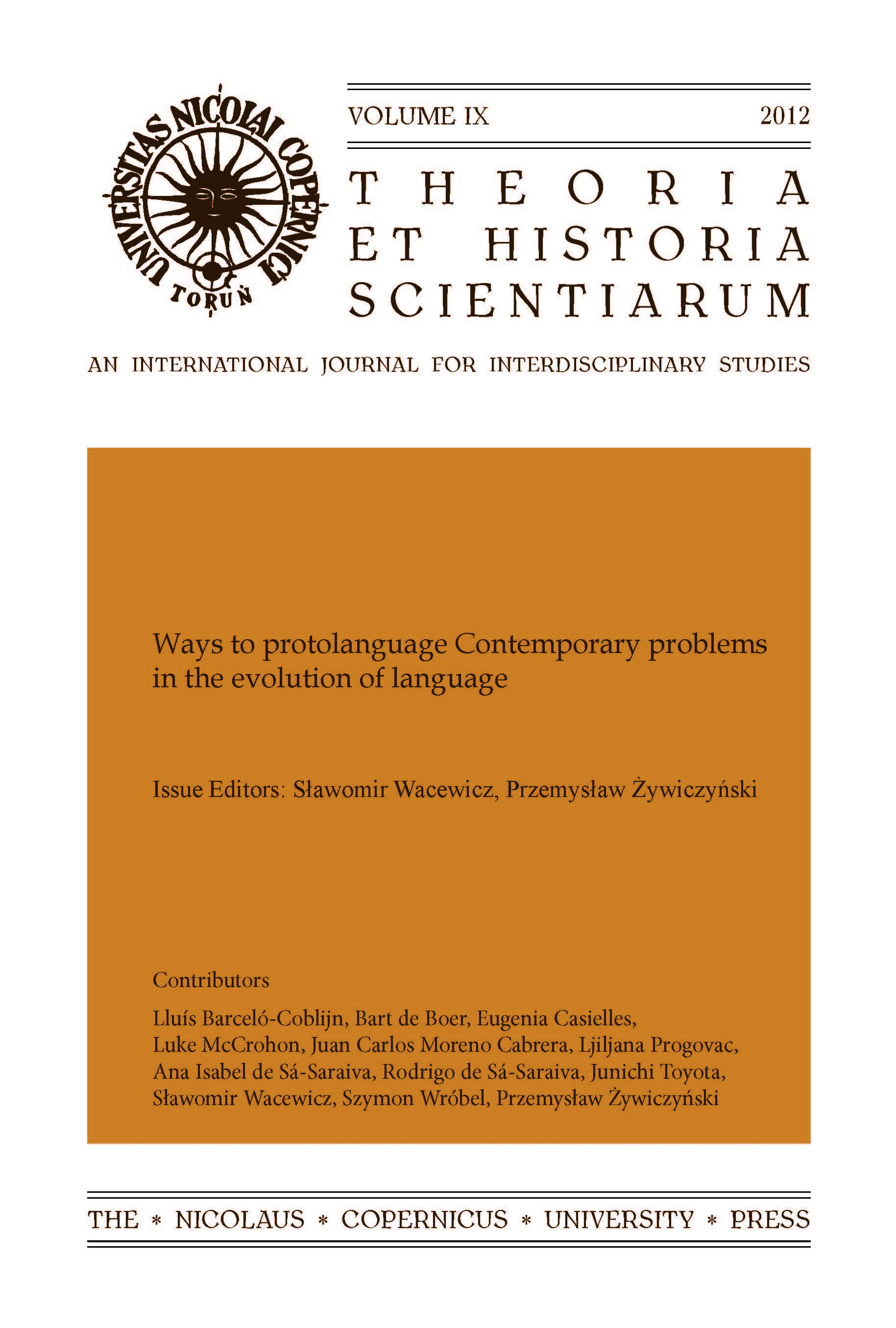The Two-Stage Life Cycle of Cultural Replicators
DOI:
https://doi.org/10.12775/v10235-011-0009-yAbstract
Other complex life cycles that include specialized memes, such as those seen in the copy-the-instructions life cycle, are thought to be worthy of further study. Multiple opportunities for memes to add specialized components to their life cycles exist, and meme specialization may find use in explaining certain aspects of linguistic and cultural behavior that currently seem puzzling. One example of such behavior is religious rituals performed in secret. Such rituals contribute little to the associated memes propagation, but can be seen to benefit the activation of an individuals associated i-memes, offering a potential adaptive advantage. Specialized memes are far easier to study as part of a multiple stage life cycle model as the relationship between different meme forms can be clearly defined. A final direction of future work is the investigation of meme replication strategies in relation to replication costs at replication and learning stages. Where meme production is relatively cheap (i.e. language use) it is expected that the sorts of replicators that succeed will differ systematically from those that succeed where production is more expensive. The life cycle model is useful in this investigation due to its implicit separation of production and learning costs, and the greater variety of reproduction strategies it can differentiate.
References
Benzon, W. (1996). Culture as an evolutionary arena. Journal of Social and Evolutionary Systems, 19, 321-62.
Blackmore, S. (1999). The Meme Machine. Oxford: Oxford University Press.
Bloch, M. 2000. A well-disposed social anthropologist’s problems with memes. In R. Aunger (Ed.), Darwinizing Culture: the status of memetics as a science. Oxford; New York: Oxford University Press.
Brodie, R. (1996). Virus of the Mind. Seattle: Integral Press. Chomsky, N. (1986). Knowledge of Language. New York: Praeger.
Cloak, F. T. (1975). Is a cultural ethology possible? Human Ecology 3, 161-182.
Crick, F.H.C. (1958). On Protein Synthesis. Symposia of the Society for Experimental Biology. XII, 139-163.
Crick, F.H.C. (1970). Central Dogma of Molecular Biology. Nature 227, 561-563.
Croft, W. (2000). Explaining Language Change: An Evolutionary Approach. Harlow, Essex: Longman.
Croft, W. (2008). Evolutionary linguistics. Annual Review of Anthropology, vol. 37, W. H. Durham, D. Brenneis and P. T. Ellison (eds.), 219-34.
Csikszentmihalyi, M. (1993). The Evolving Self. New York: Harper Collins.
Dawkins, R. (1976). The Selfish Gene. Oxford: Oxford University Press.
Dawkins, R. (1982). The Extended Phenotype. Oxford: Oxford University Press.
Dawkins, R. (1999). Foreword in Blackmore, S. The Meme Machine. Oxford: Oxford University Press.
Dediu, D. & Ladd, D. R. (2007). Linguistic tone is related to the population frequency of the adaptive haplogroups of two brain size genes, ASPM and Microcephalin. PNAS 104: 26, 10944-10949.
Delius, J. (1989). Of mind memes and brain bugs, a natural history of culture. In W. A. Koch, (Ed), The Nature of culture. Bochum, Germany: Bochum Publications.
Dennett, D. (1991). Consciousness Explained. New York: Little, Brown & Co Dennet, D. (1995). Darwin’s Dangerous Idea. New York: Simon & Schuster Paperbacks.
Durham, W.H. (1991). Coevolution: Genes, Culture and Human Diversity. Stanford, CA: Stanford University Press.
Fitch, W.T, Hauser, M.D. & Chomsky, N. (2005). The evolution of the language faculty: Clarifications and implications. Cognition 2005(97), 179-210.
Hull, D.L. (1988). Science as a Process. Chicago: University of Chicago Press.
Lai, C.S.L., Fisher, S.E., Hurst, J.A., Vargha-Khadem, F.,& Monaco, A.P. (2001). A forkhead-domain gene is mutated in a severe speech and language disorder. Nature 413, 519-523.
Lass, R (1996). Of emes and memes: On the trail of the wild replicator. Vienna English Working Papers, 5. Johannsen, W. (1911). The genotype conception of heredity. American Naturalist 45, 129-159.
Pickering, M. J., & Branigan, H. P. (1999). Syntactic priming in language production. Trends in Cognitive Sciences, 3, 136-141.
Ritt, N. (1996). Darwinising historical linguistics: applications of a dangerous idea. Vienna English Working Papers, 5.
Ritt, N. (2004). Selfish sounds and linguistic evolution: a Darwinian approach to language change. Cambridge: Cambridge University Press.
Rose, N. (1998). Controversies in Meme Theory. Journal of Memetics - Evolutionary Models of Information Transmission, 2.
Weismann, A. (1892). Das Keimplasma: eine Theorie der Vererbung. Jena, Germany: Fischer.
Williams, G.C. (1966). Adaptation and Natural Selection. Princeton: Princeton University Press.
Downloads
Published
How to Cite
Issue
Section
Stats
Number of views and downloads: 580
Number of citations: 0



